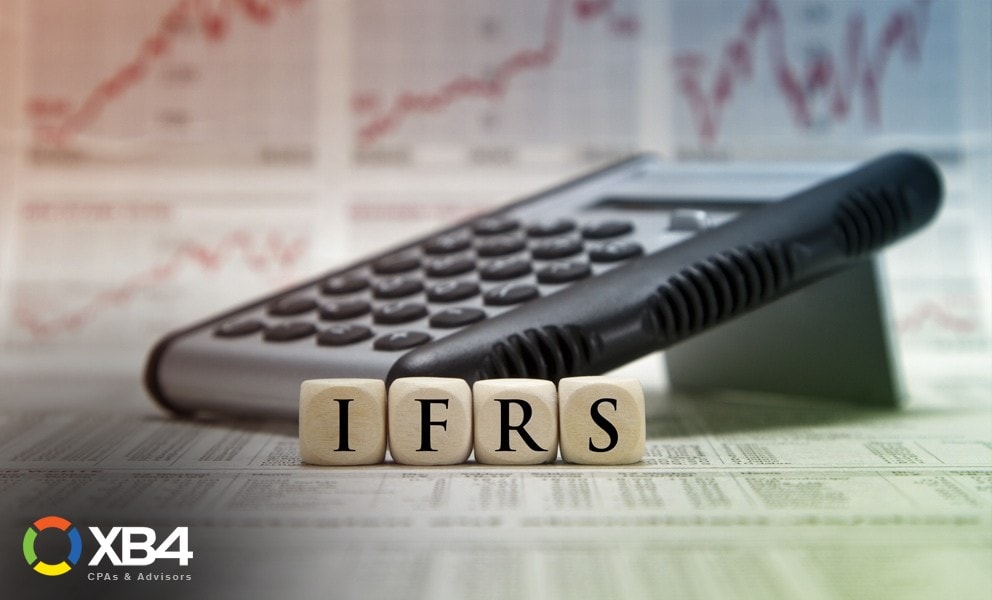
One of the most essential requirements of IFRS 16 for lessees is to record all assets and liabilities arises from the lease at the present value of the lease payments. To calculate the current value of the lease payments, an appropriate discount rate needs to be used. Determining the applicable discounted rate is very important as it directly impacts the financial results.
Let’s understand what IFRS 16 says about the use of the discount rate for lessee:
As per the IFRS 16, the lessee should use the interest rate implicit in the lease if readily determinable or the incremental borrowing rate if the interest rate implicit in the lease is not determined.
What is the interest rate implicit in the lease?
The rate at which the present value of lease payments plus the current value of unguaranteed residual value is equal to the fair value of underlying assets plus the initial cost of the lessor. And it should be readily determinable.
The word readily determinable used in the IFRS 16 because, in practical scenarios, it is not easy for the lessee to determine the rate implicit in the lease because not all the lessors will disclose their key indicators such as unguaranteed residual value and their initial direct cost involved in the lease.
Illustration 1
-
ABC LLC (Lessor) and XYZ LLC (Lessee) enter into a lease agreement of Yacht for lease term seven years in UAE.
-
Cost of the Yacht AED 700,000
-
Initial cost by the lessor AED 71,390
-
Lease payments AED 100,000 per year
-
Unguaranteed residual value at the end of 7th year AED 150,000
| Year | 0 | 1 | 2 | 3 | 4 | 5 | 6 | 7 |
| Cost of the Yacht | (700.00) | |||||||
| Initial cost by the lessor | (71.39) | |||||||
| Lease Payments | 100.00 | 100.00 | 100.00 | 100.00 | 100.00 | 100.00 | 100.00 | |
| Unguaranteed residual value | 150.00 | |||||||
| Net Cash Flows | (771.39) | 100.00 | 100.00 | 100.00 | 100.00 | 100.00 | 100.00 | 250.00 |
| Net Present Value @ 2.19% | 0.00 |
In the above illustration, interest rate implicit in the lease will be 2.19% as at this rate present value of all lease payments plus unguaranteed residual value is equal to the fair value of underlying assets plus initial direct cost by the lessor.
What is the incremental borrowing rate (IBR)?
As defined in IFRS 16, “The rate of interest that a lessee would have to pay to borrow over a similar term, and with a similar security, the funds necessary to obtain an asset of a similar value to the right-of-use asset in a similar economic environment.”
For example, in the above illustration 1, if XYZ LLC (Lessee) wants to buy the same Yacht instead of taking on the lease, then the rate of interest they should pay to borrow AED 771,390 for seven years in the UAE would be considered as incremental borrowing rate.
Following are the important aspect to decide the incremental borrowing rate:
Lessee: XYZ LLC
Similar Term: 7 Years
Similar Security: Same type of Yacht
Similar Value: AED 771,390
Similar Economic Environment: Currency – AED, County – UAE, and the same lease start date.
*It should be noted that the incremental borrowing rate may vary from Company to Company because the borrowing rate depends on the creditworthiness of the Company.
Now the questions arise that if both rates, namely, the interest rate implicit in the lease and the incremental borrowing rate, are available to lessee, which rate lessee should be used?
As per IFRS 16, if the interest rate implicit in the lease is readily determinable, then it can be used as a discount rate by the lessee for accounting purposes. If it not readily determinable, then lessee can use the incremental borrowing rate. However, both rates are theoretically different as the interest rate implicit in the lease is specific to the lessor, and the lessor uses it as a measure to calculate the minimum expected return on the lease. On the other hand, the incremental borrowing rate specific to the lessee, and this is the rate at which lessee would expect to borrow the same asset according to the conditions mentioned in the IFRS 16.
Practically in most of the cases lessees use the incremental borrowing rate (IBR) because of following issues, it is very difficult for the lessee to come up with the interest rate implicit in the lease which is readily determinable;
- Lessor Specific: As we mentioned above, the interest rate implicit in the lease is lessor specific, and the components such as initial cost incurred by the lessor and unguaranteed residual value maybe not available to the lessee or even if available will subject to due diligence.
- Readily Determinable: Components to determine the interest rate implicit in the lease, such as the fair value of underlying assets, unguaranteed residual value, and the initial cost incurred by the lessor, would not readily available to the lessee.
- Lease Payments: Calculation of lease payments for the lessee and the lessor are different, but to calculate the interest rate implicit in the lease, the lessee should use the same lease payments used by the lessor.
What is the direct impact of a higher discount rate on the financial results?
- If a higher discount rate applied to calculate the present value of lease payment, it will result in lower liability and right of use asset. Also, the gearing ratio will be lower due to lower liability, and assets turnover ratio will be higher due to lower asset value.
- Higher the discount rate, the higher the interest expenses, and due to higher interest expense, Interest cover will be lower.
- As a result of lower asset value depreciation will also be lower and will result in higher earnings before interest and tax (EBIT)
- Earnings before interest, tax depreciation, and amortization (EBITDA) will remain unchanged as depreciation and interest both not considered in the calculation of EBITDA.
What transition options available under IFRS 16 and its impact on the discount rate?
As IFRS 16 Leases mandatorily applicable on or after 1 January 2019, companies need to follow guidelines as mentioned in the IFRS 16 and reassess their assets and liabilities. IFRS 16 permits the following two approaches for transition:
- Full retrospective approach: Under this approach, IFRS 16 needs to be applied retrospectively from the beginning of the lease contract and should be in line with IAS 8 Accounting policies, change in Accounting Estimates, Errors. All adjustments in equity need to be done as on 01 January 2018 as a reassessment of comparative financial information is required under this approach.
- Modified retrospective approach: Under this approach, IFRS 16 needs to be applied from 01 January 2019, and all equity adjustments need to be done on 01 January 2019. Reassessment of comparative financial information is not required in this approach
And the following will be the impact on the discount rate:
- If the Company adopts a full retrospective approach, then the discount rate needs to be used as applicable at the lease commencement date.
- If Company adopts a modified retrospective approach, then the discount rate needs to be used as of 01 January 2019, i.e., initial application date, not the lease commencement date.
It means selecting of transition approach will directly impact the financial results as the discount rate will vary from one approach to another.
Key takeaways:
- Care should be taken by the lessee from the inception date of lease till completion, as it would affect the financial results if not planned and implemented carefully.
- Lessee need to keep documents/evidence of all approaches, judgments, and assumptions (if any) used to adopt a discount rate for audit and internal control purpose.
- Lessee needs to determine a separate discount rate for every lease; however, the Portfolio approach can be used by the lessee for the portfolio of leases with the same characteristics.
- All lease contracts need not reassess, as IFRS 16 permits that transition required for only those leases on which IAS 17 and IFRIC 4 we applied.
- It is advisable to have a database of all the leases and necessary systems and processes to calculate the lease liabilities and assets.
Frequently asked questions:
Is there any exemption provided in the IFRS 16 for the application of discounted rates?
No, there is no specific exemption for application of discounted rates, but there is following two exemptions permitted in the IFRS 16;
- Short term leases: Leases that have a total lease term of twelve months or less (without purchase option), can be simply booked in the profit and loss account on a straight-line basis.
- Low-value assets: Leases where asset value is equal to or less than USD 5,000 can also be booked directly in profit and loss account on a straight-line basis.
Which discount rate should be used for property leases? Or How to calculate the discount rate for property leases?
IFRS 16 did not provide an asset-specific discount rate, lessee needs to determine the discount rate as per the underlying asset and terms and condition of the lease contract. In the case of property lease property, yield can be taken as a base to calculate the discount rate. However, adjustments need to be made for influencing factors such as lease term, the creditworthiness of lessee, the currency of a lease, and associated property’s risk.
If Lessee finds it difficult to calculate discount rate using property yield, he can also use property borrowing rate specifically available for lessee as discount rate subject to some adjustments such as lease term, residual value, and security similar to the underlying asset.
Does lessee need to recalculate the discount rate, if there is a change in lease term or any other terms and conditions of the lease after calculating the discount rate and recognizing the assets and liabilities in books?
Yes, as per the requirement of IFRS 16 lessee needs to recalculate the lease liability using revised payment and discount rate, if there is a change in the lease term or any significant change in terms and condition of the lessee because there is a direct impact of discount rate on the financial results as we discussed above.
Can we refer to the definition of an appropriate discount rate, as mentioned in IAS 17 Leases?
No. As 01 January 2019 onwards, IAS 17 Leases is superseded by IFRS 16, and the discount rate needs to be carefully calculated, as explained above.
How to assess and apply lease definition as per IFRS 16?
Definition of the lease as per IFRS 16: ‘A contract, or part of a contract*1, that conveys the right to use*2 an asset*3 (the underlying asset) for a period of time in exchange for consideration*4.’
If the answer to all questions is “YES,” then the lease exists in the contract, otherwise relevant IFRS needs to apply accordingly.
- Contract or part of a contract: Is there any written agreement or contract?
- Right to use: Is the contract convey the right to use the asset to the customer?
- An Asset: Are there any identified assets?
- In exchange for consideration: Is there something in return or economic benefit that exists in the lease contract?
Is it possible to use the same discount rate at the group level, in case of a group of companies?
As every lease has its unique value and terms and conditions, in most cases, it’s not possible to use the same discount rate used by the group company. If underlying assets, terms & conditions of the lease, and other factors deciding the discount rate are similar, then lessee can use the same discount rate.
Which discount rate lessor should use?
As per IFRS 16, a lessor should use the interest rate implicit in the lease for the classification and net investment in the finance lease.
















